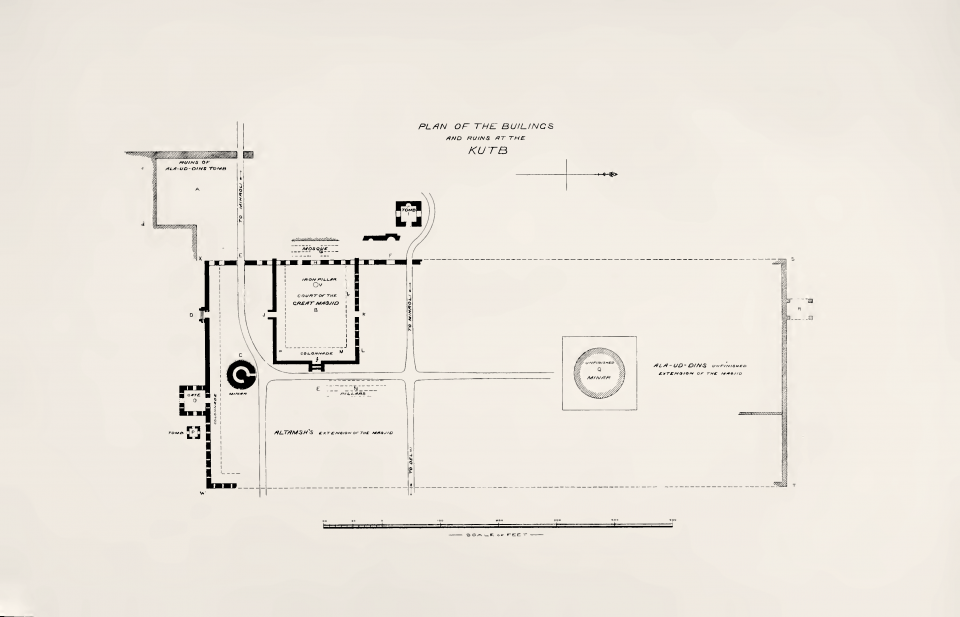THESE pillars are grouped together opposite to the eastern entrance and their arrangement is octagonal in form. The dome which rests upon them is closed in by successive horizontal layers of carved stones placed one above the other, the eight corners of each slab resting upon the eight sides of that immediately under it, until at length a single slab covers in the top. The column in the foreground of the photograph resembles the character of those to be seen in the Jaina Temples on Mount Abu,—the lower shaft being long, and the upper one short. In many of the carved stones there are the remains of cement or plaster, which it is probable was used by the Muhammadans to hide the carved images, or, on the other hand, by the Hindu inhabitants of Delhi to preserve them. The pillar to the right has a ledge similar to the one to which I have drawn attention in the preceding photograph, and as in that case, so in this it was very likely once occupied by a figure, or supported a truss like that often used in the construction of Hindu temples to strengthen a long beam or architrave. These trusses usually sustain the centre of the beam. They rest on projections placed some distance down the sides of the two pillars opposite to one another, which support the beam. In some buildings the trusses were elaborately ornamented and present a very attractive appearance.
![The Masjid-i-Kutb-ul-Islam [Quwwat-ul-Islam Mosque]. Pillars in the north-east corner of the Colonnade. The Masjid-i-Kutb-ul-Islam [Quwwat-ul-Islam Mosque]. Pillars in the north-east corner of the Colonnade.](https://architexturez.net/data/styles/large/public/media/architectureofan00cole_Page_091.png?itok=8hZAzzUW)
